A couple of days ago I was out taking close up pictures with a macro lens. Today, I thought I would try to go a bit further by focus stacking some images.
The biggest problem with doing close up pictures is that the closer you get, the shallower becomes the depth of field. That can be used to great effect to produce great images but if the main aim is to convey information it is a serious limitation in that most of the picture is out of focus.
To an extent using a smaller aperture will help, but you don’t go very far before you start to lose sharpness over the whole image because of diffraction. Focus stacking allows me to keep a large aperture for sharpness but to get the whole subject in focus by combining multiple shots.

I started out on Astrantia. I have a large clump of an un-named and undistinguished form which has been in flower for several weeks. I cut a single stem, popped it in a vase and controlling the camera remotely from my PC, took a stacked image which combined 45 shots.

The topmost central flower head opens first. Below it is a whorl usually of four or five subsidiary flower heads which open later. Each of these will often develop a pair of flower heads half way up its stem as well. As you can see in the picture above, the secondary flower heads look markedly different from the apical one. I closed in for a closer look.
It turns out that in the apical flower head there are two types of flower, with or without a developing ovary below the flower. Those with an ovary have a pair of reflexed stigmas coming of them.

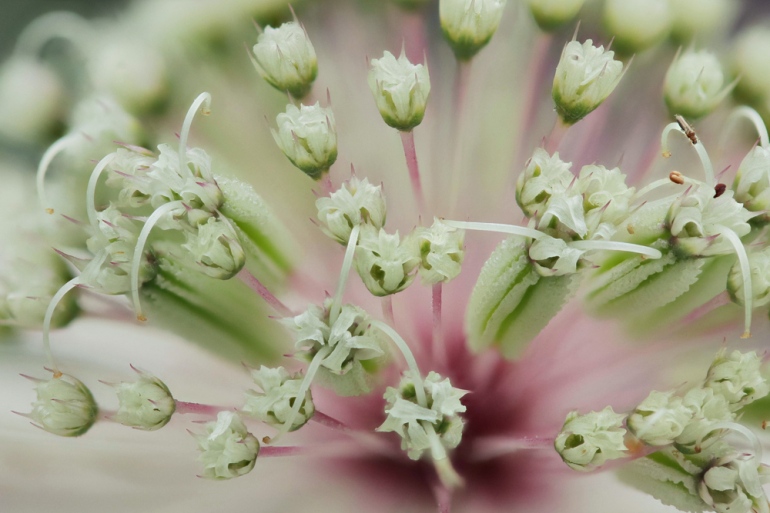
The next picture shows the second tier flower heads and what is happening here is that the individual flowers are almost all male and the stamens, visible as brown amongst the pink, are just starting to open up. One at top right has opened out on its pink filament. Amongst the predominantly male flowers on the left head you may be able to see a couple of pairs of white stigmas, not yet reflexed.
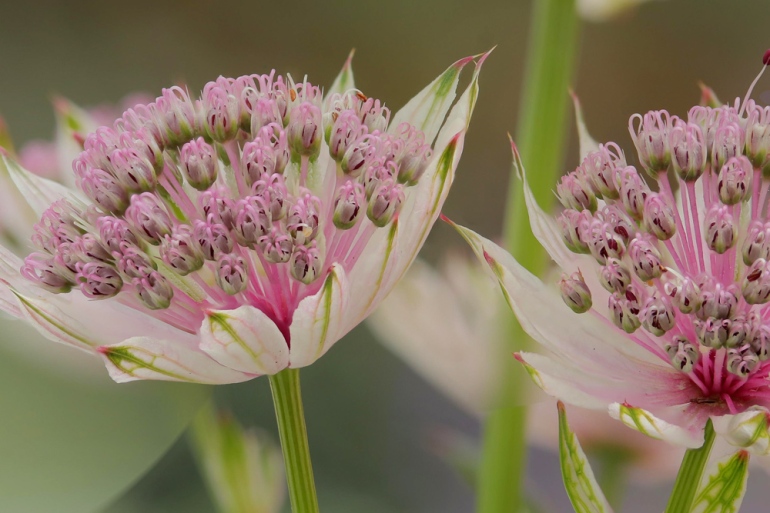
Time to dismantle the flowers for a closer look. This is a section of the apical flower. The anther filaments are present in the male flowers but are white and never straighten out.

The predominantly male second tier flower head had a few female flowers mixed in but perhaps only one in twenty. The pink anther filaments are arched over in the unopened flower and straighten out as the flower opens.
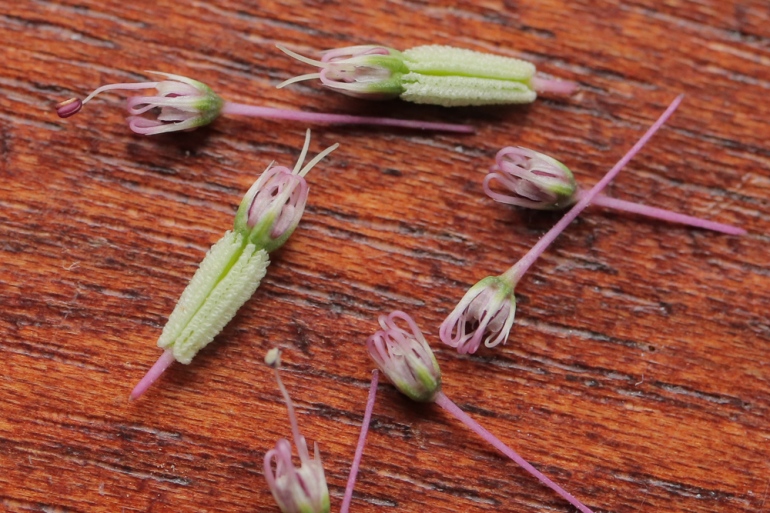
At that point I went and had another look at the plant. It turns out that while the earliest terminal flower heads are all female, the later ones are more mixed. In this next picture, all flowers cut from a later terminal flower head, there are sterile flowers with neither stigma or anthers, male flowers with anthers, female flowers with stigma but no anthers and hermaphrodite flowers with stigma and one or two anthers. On none of the flowers did I see obvious pollen.
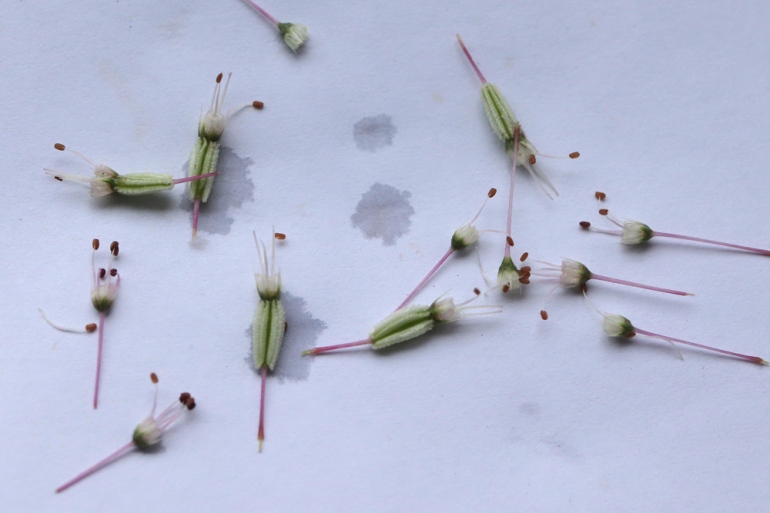
Just out of curiosity, I tried taking a few pictures with my iPhone, not a top of the range camera one, admittedly. I’m seeing no pollen in that either.
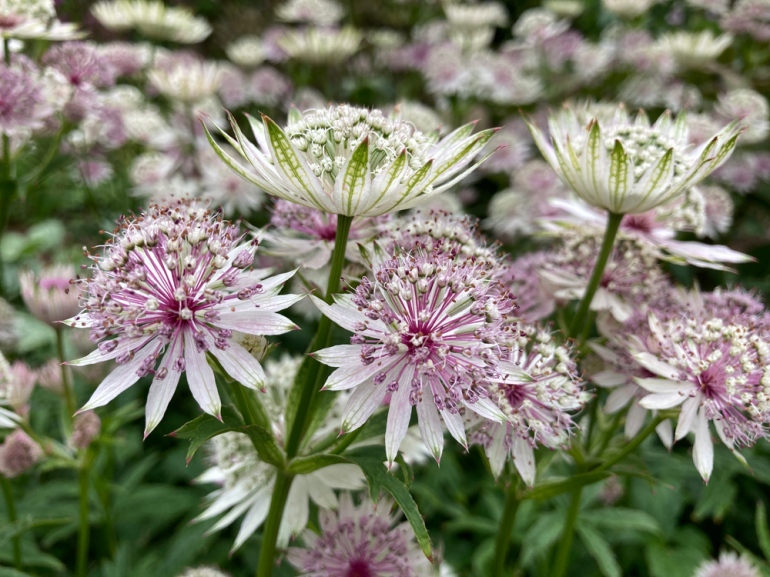
Going back to focus stacking for a moment. I lugged my big pot od Codonopsis clematidea in for the photo shoot. Here are two images, the first taken at F32, the second a stack of 68 images taken at F3.2. The second image needed a bit more editing, there’s fuzziness around the overlap zones, but you can see the gain in sharpness.
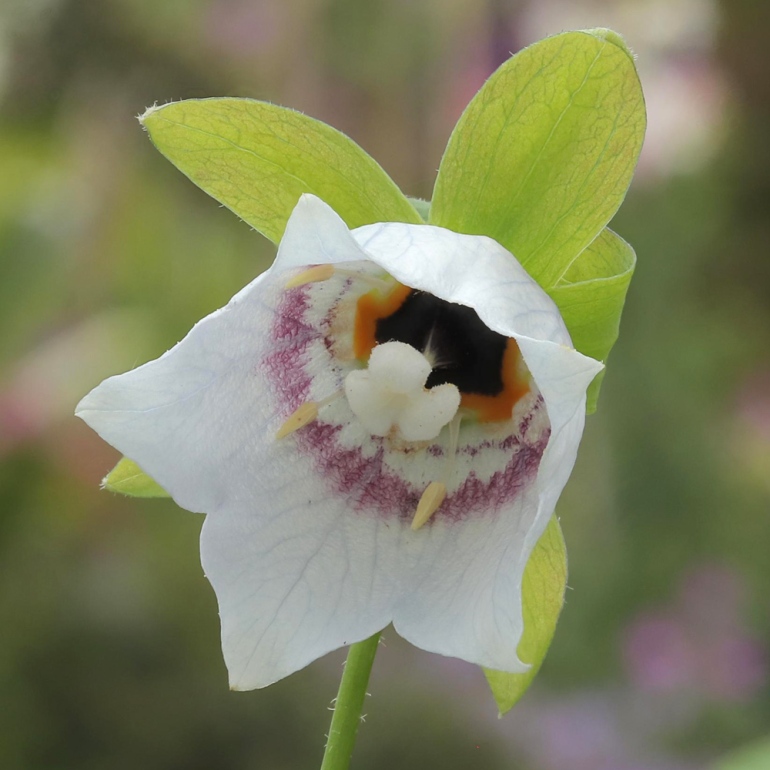
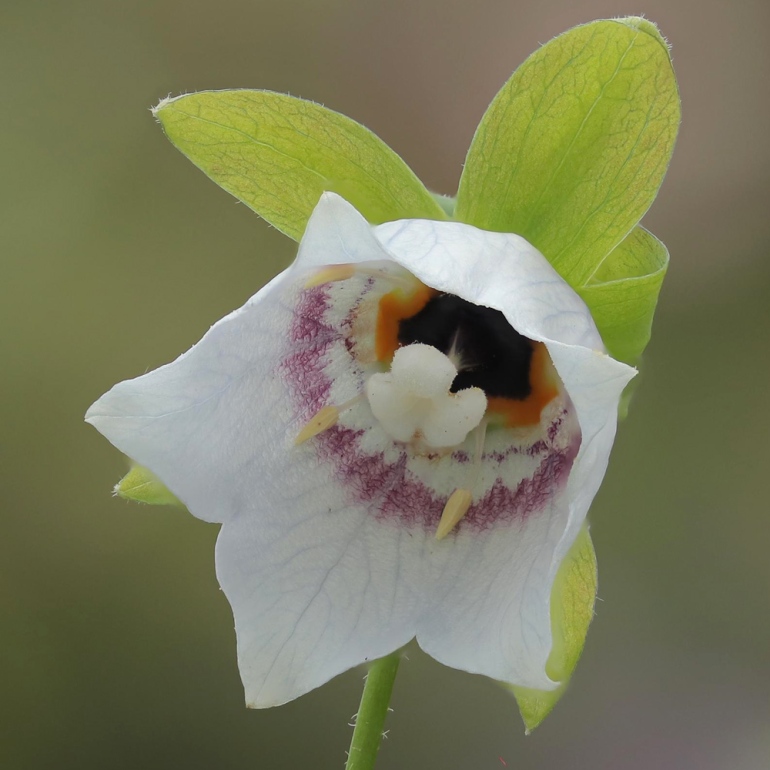
You don’t normally see the inside of the flowers as the bells hang straight down. From the outside they’re pretty enough but nothing special.
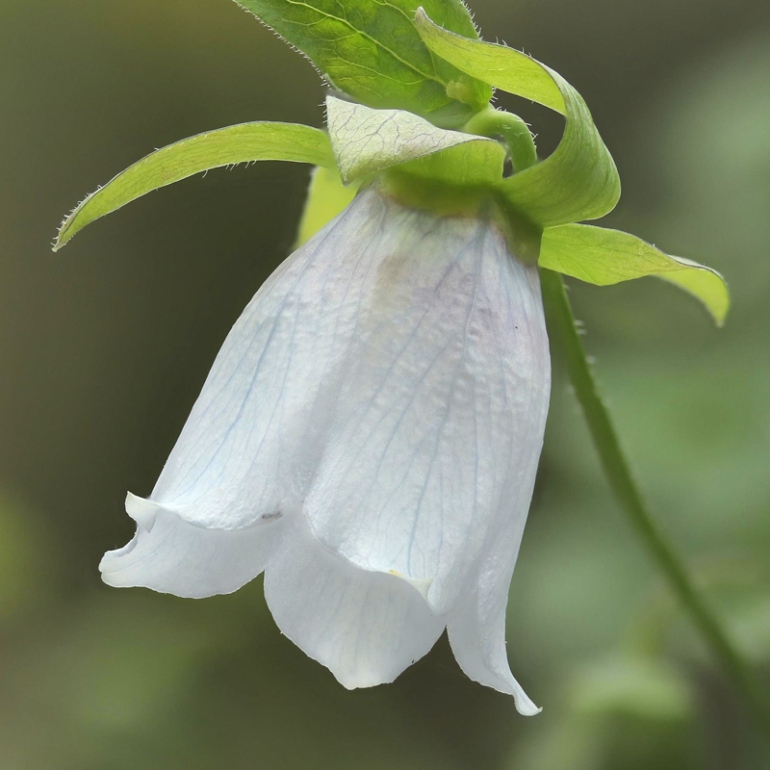
Of the three remaining stacks, two are on the cutting room floor and this is the last one.

Stunning images, and interesting to read about photo stacking. My level of photography is the other end of the scale, unfortunately, but I am trying to learn more as I go!
LikeLike
I look at photography websites occasionally and get sharply reminded that I know practically nothing and am merely playing around the edges of a highly technical art form.
LikeLiked by 1 person
I agree with you on that. Although I’m a novice, I still enjoy taking photos.
LikeLiked by 1 person
Oh yes, you have caught the photography bug! Do you use software to do your photo stacking? I have done it manually but this week heard about Helicon software and am definitely going to try it. As for f/32 – you have a serious camera! Love the pictures!
LikeLike
I gave in and purchased Zerene Stacker some years back, just the basic version. CombineZP is and was free and quite good, but I wanted more, like you do. Now I’ve been reading about taking images with very small apertures indeed, then using software to improve the sharpness and remove noise. You then only need to take one shot instead of multiple shots, removing the problem of the subject moving, which things outdoors nearly always do.
LikeLike
Superb pictures, and loved the flower dissection and details. Is this the same for all Astrantia? I am having trouble encouraging a couple of Astrantia I bought last year to ‘move’. Just staying small. Any hints of bringing out the best in them? Roma and Maxima were bought and planted last spring, a small seedling bought from a table top sale has romped away!
LikeLike
My clump is the wild version, if there is such a thing and is as tough as they come. I suspect the named forms are probably micropropped and pushed fairly hard to get a saleable plant in a reasonable time. I had a similar experience with my one named form, which I have lost the name of (!) in that it took about three years to settle down and start to grow.
LikeLike
That was amazing. What patience you have!
LikeLiked by 1 person
These are just lovely pictures, really highlighting what smashing plants Astrantia are. Fab!
LikeLiked by 1 person